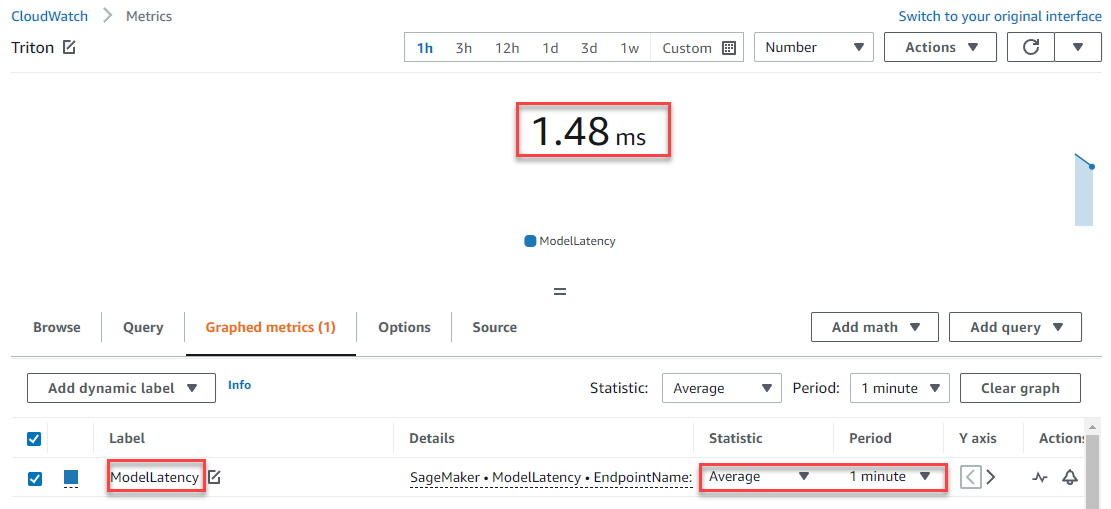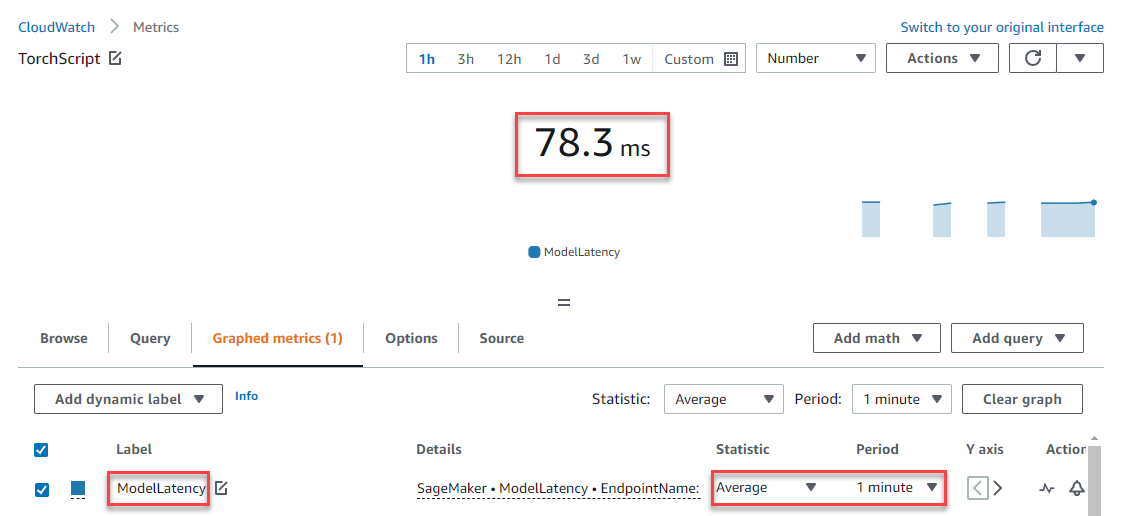
Unwanted and unsolicited bulk digital communication (“spam”) is responsible for substantial direct and indirect economic damage every year.
Traditional ways to identify spam by detecting certain keywords, manually reviewing text records, or even running Natural Language Processing (“NLP”) pipelines are no longer sufficient.
This article describes the architecture of the state-of-the art Spam Detection Engine of C-Suite Labs consisting of multiple inter-dependent distinct classifiers delivering real-time, high-performance superior accuracy with minimum required manual review.
This article focuses on the DistilBERT spam content model. Application of NVIDIA Triton Inference Server for this use case provides the inference throughput 2.4 times higher than TorchScript Inference Server with 52.9 times lower model latency.
We prepared an interactive widget for your evaluation of the quality of the described model trained on 40k representative records.
The article’s GitHub Repository
https://github.com/jiripik/nvidia-triton-c-suite-labs-spam-detection-engine
1. The Universal Significance of the Spam Problem
Spam is a widespread problem:
- Americans are drowning in spam (axios.com)
- The independent estimate is that conservatively 20% of active Twitter accounts are spam
- Twenty-seven percent of activity on social media platforms is a form of attack
Spam is an exceedingly difficult problem:
- Defining spam is difficult, e.g., most social media managers consider “fake news” to be a different problem than “spam”. However, 79% of users think fake news is spam
- Email verification is easy to bypass (How to Check For Your User’s True Identity)
- Captchas are easy to bypass (Solving Captchas for Cash)
- SMS verification is expensive, and even then, can be bypassed with virtual or ported numbers (Number Insight API)
- Twitter CEO Agarwal: many accounts that appear to be spam are in fact operated by real people and vice versa
- To identify spam, one needs to look at several signals: SparkToro research looks at 14 factors, including display name, existence of profile image, account age (SparkToro & Followerwonk Joint Twitter Analysis: 19.42% of Active Accounts Are Fake or Spam – SparkToro ).
The presence of spam has profound consequences:
- It damages the platform credibility
- Anderson (HubSpot VP): “when you lose someone’s trust, that distrust lingers for long after you’ve made changes to remedy it.”
- The results of a HubSpot survey of 542 internet users in the U.S., Canada, and the United Kingdom indicate that 46.9% of users have noticed more spam in their social media feeds.
- It drowns out legitimate content
- It reduces user engagement
- It results in real financial losses
- for end users
- Social media enabled cybercrimes to generate at least $3.25 billion in global revenue annually, and criminal revenues generated by social media fraud have increased by 60% since 2017.
- In Australia, the Australian Competition & Consumer Commission’s Crime Watch website reports that there was $22,095,164 in reported losses from 8,195 victims in 2019, compared to the $15,769,203 in reported losses from 6,829 victims in 2018.
- for platform owners
- Musk negotiating a price discount because of the prevalence of spam accounts on Twitter
- Stock price has dropped 25%
- for end users
2. The Significance of the Spam Problem for C-Suite Labs
C-Suite Labs runs multiple social network platforms where users post messages, along with URL media links.
Over time it realized that there is no reliable public API taking into multiple factors to generate an overall spam score.
Partial, single-factor solutions simply do not work:
- Block lists do not work – solutions that block known abusive domains, keywords, IP addresses or usernames are amazingly easy to bypass
- Text Analysis Approaches do not work – solutions analyzing text in comments, such as OOPSpam, fail to address the text hidden in preview image or in the destination page
- Domain-Based Approaches do not work – solutions aiming at determining if the URL links is safe by studying the reputation of the hosting domain, such as Google Web Risk API, or Web of Trust API, do not work – anybody can upload a video containing spammy text to YouTube and these services would consider it safe since it’s hosted on a trusted domain (YouTube).
3. C-Suite Labs Spam Detection Engine
Consequently, C-Suite Labs has collaborated with Jiri on designing their next generation Spam Detection Engine approaching the problem from three distinct angles: User, Message and Link. Each social network’s record comes from a source, i.e., the user, from a device with an IP address following a certain sequence of UI steps. The record’s content has a message and may contain a link.
Our joint design consists of an ensemble of models:
- IP & URL Models
- Poster’s IP address – The IP addresses of the source are effective spam indicators and blocking them over time can significantly reduce spam posts. Our engine identifies the IP addresses consistently posting spam.
- Link URL Domain – Spam URLs follow similar patterns. Hence if the URL pattern matches previously reported URLs, it is predictive of spam. The key features are:
- url_age: time for which the link has been active on the web
- url_wot_score: Web of Trust score of the URL
- url_google_score: the Google Web Risk score for the URL
- url_domain: the domain of the URL
- url_tld: the network location top level domain of the URL
- url_subdomain_count: the number of subdomains in the URL
- url_token: the concatenated path tokens extracted from URL text
- Link URL Context – We run data wrangling techniques on the historic data of the platform and generate such features that correlate to the spam:
- url_post_count: the number of times URL has been posted
- post_share_count: the number of times the message with the URL is shared
- post_comment_count: the number of responses responses/traction does the post gets
- domain_report_count: the number of times the URL’s domain has been reported
- text_content: the content of the message posted with the URL
- Poster’s IP address – The IP addresses of the source are effective spam indicators and blocking them over time can significantly reduce spam posts. Our engine identifies the IP addresses consistently posting spam.
- Social Behavior Models
- Poster Profile – We study features like (1) friends count or (2) the length of time on our platforms or (3) the user’s past activities on the social networking site.
If the user profile is similar to other accounts previously reported as spam, there is a high probability it is a spammer user profile.
Also, the history of the user might also be indicative of a spam account. Combining these, the profile features that have correlation to spam are:- user_age: the time for which the user has an account on the platform
- user_email_domain: the domain of the user’s email address which they are registered
- user_friends: the number of friends of the user
- user_followers: the count of followers of the user
- user_verified: a boolean to determine if the user is influential and verified by the platform
- user_posts: the number of posts the user has published on the platform
- user_spam_posts: the number of times the user’s post has been reported as spam
- user_spam_report: a boolean to determine if the user has been reported as spam
- user_link_count: the number of times the user has shared this link
- user_post_count: the number of times the user has shared this post
- Poster Journey – We analyze the sequence of steps the user takes to post the social network’s new record. For example, spammers or bots tend to utilize highly efficient workflows.
- Users’ Feedback – We analyze the patterns of other users’ complaints about each social network record
- Poster Profile – We study features like (1) friends count or (2) the length of time on our platforms or (3) the user’s past activities on the social networking site.
- Content Models
- NLP analysis – We analyze the user post and the contents of the linked web page, including OCR analysis of any image in the page and the transcript of excerpts of all videos. The model is based upon supervised or semi-supervised learning models, such as BERT, and GPT-3.
We apply neural network and machine learning based approaches to develop a series of models for each of these sub-systems. Their outputs are then fed into the primary machine learning model, a decision tree, that outputs the final classification result:
The architecture leads to the following insights:
- If the URL domain is already safely banned, we can reach the immediate conclusion that the new social network’s record is spam and stop.
- Social Behavior Analysis then provides an indication if the user’s new post is spam – for example, past complaints, if present, and the poster journey are an extraordinarily strong indicator (about 90% accuracy) that the new post is spam.
- Finally, we run the NLP analysis on the textual content of the user post and the textual representation of the associated images or videos.
4. Introduction to the C-Suite Labs’ DistilBERT Content Model
4.1 BERT Models
Google’s Bidirectional Encoder Representations from Transformers (BERT) base uncased models are the current state-of-the-art models for text classification delivering accuracy over 97% depending on the quality of the training set.
The BERT architecture is based on
- A Transformer Encoder model (a neural network that takes an input sentence and tokenizes each word, the output is a vector numerical representation of each token)
It provides better context understanding than LSTM or RNN, since it processes sentences simultaneously.
It builds context for a word using the inputs before and after it while LSTM or RNN only account for inputs before it → BERT has better performance.
For example, the word “apple” in “I need the apple” and “I need the apple product” would have the same vector value in LSTM or RNN, but different in BERT. - Transfer Learning (train a model for a general task and reuse that to fine tune BERT to a new task).
BERT has been trained on BookCorpus (800M words, 11038 books – same as GPT-1) and the English Wikipedia (2.5B words). It took 4 days on 64 TPUs.
Pretraining is slower, but fine tuning is faster. Sometimes it can be done on a single GPU.
BERT has two tasks:
- Masked Language Model (MLM) was originally released by Devlin et al in 2018 at Google.
- Predicts a random 15% of (sub)word tokens. To regularize, it:
- Replaces input words with a mask 80% of the time
- Replaces the input word with a random token 10% of the time
- Leaves it unchanged 10% of the time (but still predicts it)
- Uses a transformer encoder to do that
- The pretrained inputs to BERT are two separate contiguous sequences
- Predicts a random 15% of (sub)word tokens. To regularize, it:
- Next Sentence Prediction (NSP). The MLM does not support the concept of relationship between sentences. In this task, the model is taught relationships between sentences.
A study by Sergio Rojas-Galeano highlighted
- The BoW (Bag of Words), TFIDF (Term Frequency Inverse Document Frequency), and BERT encoders can extract effective functions to identify spam using widely used classification algorithms, but BERT performs slightly better. This confirms their quoted previous literature.
- Empirical evidence that BERT can resist Mad-lib attacks while BoW or TFiDF are vulnerable. It uses an adversarial automatic procedure to generate the attacks.
The study by Andrew McCarren and Jennifer Foster shows BERT outperforms the neural models based on FFNN, CNN, LSTM (RNNs).
4.2 DistilBERT Models
For our Spam Detection engine, we chose its DistilBERT variant which, according to its authors is “60% of the size a BERT model while retaining 97% of its language understanding capabilities and being 60% faster”, implying it’s also more cost-effective to apply.
We used its HuggingFace implementation.
4.3 Training Set
Our training set was constructed as a combination of these datasets:
- Professionally labelled spam datasets
- C-Suite Labs’ carefully curated spam dataset
- C-Suite Labs’ rule-based labelled dataset.
4.4 Training Code
The simplified implementation of our DistilBERT code is below and in the article’s GitHub repository:
logging.info('Loading the pretrained tokenizer and model')
tokenizer = DistilBertTokenizer.from_pretrained('distilbert-base-uncased')
model = DistilBertForSequenceClassification.from_pretrained("distilbert-base-uncased")
logging.info('Preparing the training and evaluation dataset')
train_data, val_data, train_labels, val_labels = train_test_split(dataset[COL_DATA].values, dataset[LABEL].values)
train_tokens = tokenizer(list(train_data), return_tensors="pt", padding=True, truncation=True, max_length=BATCH_SIZE)
val_tokens = tokenizer(list(val_data), return_tensors="pt", padding=True, truncation=True, max_length=BATCH_SIZE)
train_dataset = ClassificationDataset(train_tokens, train_labels)
val_dataset = ClassificationDataset(val_tokens, val_labels)
logging.info('Training Started')
trainer = Trainer(
model=model,
args=TrainingArguments(output_dir=TRAIN_DIR, num_train_epochs=NUM_EPOCHS),
train_dataset=train_dataset,
eval_dataset=val_dataset,
compute_metrics=compute_metrics,
)
trainer.train()
model.save_pretrained(FINAL_DIR)
tokenizer.save_pretrained(FINAL_DIR)
logging.info('Training Completed')
print("**************** Evaluation ************")
metrics = trainer.evaluate()
metrics["eval_samples"] = len(val_dataset)
trainer.log_metrics("eval", metrics)
trainer.save_metrics("eval", metrics)4.5 Examples of the Model’s Results
Evaluate the quality of this small model by typing a sample sentence:
Examples of spam:
- buy cheap drugs 123-800-1TOLL=FREE
- Your Microsoft account has been compromised. You must update it immediately or your account will be closed. Click here to update. http:\\www.micr.osoftr.com\update
Examples of non-spam:
- Americans who haven’t had covid-19 are now officially in the minority.
- Cryptocurrencies like bitcoin were meant to be used as digital cash. Instead, they’ve become popular as speculative investments.
5. Introduction to NVIDIA TensorRT and NVIDIA Triton Inference Server
NVIDIA® TensorRT™ is an SDK for high-performance deep learning inference which includes
- a deep learning inference optimizer and runtime that delivers low latency
- high throughput for inference applications.
TensorRT can be understood as a Deep Learning Compiler that produces an NVIDIA GPU optimized binary executable (“TensorRT engine“).
NVIDIA Triton™ Inference Server is an open-source inference server that helps standardize model deployment and execution and delivers fast and scalable AI in production supporting most machine learning frameworks, as well as custom C++ and Python code.
Triton’s Backend:
- TensorRT is the recommended backend with Triton for GPU optimal inference.
The best way to convert your TensorFlow or PyTorch model to TensorRT is to convert it to an ONNX model and then convert the ONNX model to TensorRT. During the ONNX to TensorRT conversion step, the TensorRT Optimizer step runs several optimizations, such as Layer Fusion, which yields a highly GPU optimized inference model. - It is possible to choose another Triton supported backend, such as TensorFlow, Torchscript, ONNX etc.
The principal reason you should use NVIDIA Triton Inference Server for the deployment of machine learning models is the increased throughput and higher utilization of the hardware compared to the performance provided by other model serving solutions.
5.1 Key advantages of using the NVIDIA Triton Inference Server
- One server can serve multiple models based upon multiple machine learning frameworks → it dramatically simplifies the infrastructure.
The supported frameworks are: TensorFlow 1.x and 2.x, TensorFlow SavedModel, TensorFlow GraphDef, TensorRT, ONNX, OpenVINO and PyTorch TorchScript. - It offers massive parallelization – it can run simultaneously multiple instances of identical or different models concurrently on a single or multiple GPUs.
- It is designed for massive throughput – it applies a series of scheduling and batching algorithms to aggregate inference requests and executes them in optimal batches on an optimal schedule
- It supports model ensembles – with a single inference request, you can trigger an execution of an entire pipeline, such as connection of output and input tensors between models
Once you deploy a model to SageMaker NVIDIA Triton endpoint, you can access it via NVIDIA Triton client libraries in Python, C++, or Java.
5.2 NVIDIA Triton Inference Server Presentation of March 2022
Watch the NVIDIA’s webinar on Fast, Scalable, and Standardized AI Inference Deployment for Multiple Frameworks, Diverse Models on CPUs and GPUs with Open-source NVIDIA Triton.
6. AWS Setup
We prefer AWS to other public clouds for its reliability, cost-efficiency, and ease of use. We prefer NVIDIA GPUs for training deep learning models for their performance.
6.1 AWS Inference Environments
AWS offers two solutions for training and deploying machine learning models:
- AWS SageMaker Notebook Instances for training and AWS SageMaker Inference Endpoints for inference
- AWS EC2 instances for training and AWS ECS for inference
Each solution has its advantages and disadvantages:
| AWS SageMaker Notebook Instances with AWS SageMaker Inference Endpoints | AWS EC2 Instances with AWS ECS | |
|---|---|---|
| Description of the services | Managed Services, with minimum set-up effort. Supported versions of Python / Triton libraries are not the latest ones. | Full control over the environment, with extra effort required to set it up. Complete freedom to install and use the latest versions of all libraries and monitoring solutions. You can isolate version conflicts |
| Libraries Versions Conflicts | Installing latest versions of libraries may cause unsolvable version conflicts. | You are free to use various conda environments or even docker images. |
| Integration with other AWS services | More complicated than on an EC2 instance. SageMaker does provide a Linux shell, or you can execute any Linux command from the Jupyter Lab, so you have access to all AWS services. Check the Instructions how to set up EFS for SageMaker. | The best way to make the most of AWS. For example, you can easily set up the drive for the model’s training files as an AWS EFS drive – the key advantage of an EFS is that its size is elastic, and your training will never stop because you run out of space. |
| AWS Shared Responsibility Model | AWS is responsible for security of all provided libraries. | You are solely responsible for the security of the software you install. The latest versions of libraries may have security problems. |
| Reliability | Though Jupyter Notebooks / Jupyter Lab are stable, occasionally, you must restart the kernel. | Mission-critical stability and reliability. Recommended for production use. |
| Primary Use Cases | Application of time-tested solutions. | Cutting-edge solutions. |
In addition, we strongly advise against using outputs from different versions of PyTorch / TensorFlow as inputs to another version of PyTorch / TensorFlow, for example, trying to import one from an EC2 Instance into a SageMaker Notebook. In most such cases, you will receive an error message only at the end of the ML pipeline – NVIDIA Triton’s SageMaker Endpoint will fail to initialize.
6.2 Deployment of the model to NVIDIA Triton Inference Server
We present below the deployment of the described model using AWS SageMaker Notebook Instance to AWS SageMaker Inference Endpoint running the Docker image of NVIDIA Triton Inference Server.
We describe the steps outlined in the solution’s Jupyter Notebook along with the expected output.
6.2.1 Step 0 – Setting up the AWS SageMaker Notebook Instance
AWS offers multiple compute instance types suitable for deep learning. Check this guide to decide which one is the most suitable for your use case:
We used this instance:

Notice:
- We increased the required disk space to a safe value of 1 TB.
- We do not need to use Elastic Inference – it is used to add a fractional GPU for accelerating inference at cheaper cost. In our case, we are already using the GPU instance of ml.p3.2xlarge which comes with a whole V100 GPU → we don’t need the elastic inference.
- We used the platform identifier of Amazon Linux 2, Jupyter Lab 1. Using a different value may cause version conflicts.
- The Jupyter Lab’s kernel to be used for the solution notebook is “conda_amazonei_pytorch_latest_p37”. Using a different kernel may cause version conflicts.
6.2.2 Step 1 – Installation of the model required libraries
!pip install torch -U
!pip install -qU pip awscli boto3 sagemaker transformers
!pip install nvidia-pyindex
!pip install tritonclient[http]
!pip3 install pickle5
!pip install datasets
!pip install nltkNotice: We have upgraded the PyTorch library to the latest version. Without this step, we would not be able to save to model the ONNX file and deploy to NVIDIA Triton Inference Server. This upgrade causes minor library version conflicts – we do not depend on them:
ERROR: pip's dependency resolver does not currently take into account all the packages that are installed. This behaviour is the source of the following dependency conflicts.
torchvision 0.6.1 requires torch==1.5.1, but you have torch 1.11.0 which is incompatible.
torcheia 1.0.0 requires torch==1.5.1, but you have torch 1.11.0 which is incompatible.6.2.3 Step 2 – Train the model
The code has been described in section 4.4.
Usually, we would add a step of evaluating the model on a larger test dataset. We do not share the dataset with the solution, so we omit.
6.2.4 Step 3 – Generate the ONNX file
!docker run --gpus=all --rm -it -v `pwd`/workspace-trt:/workspace nvcr.io/nvidia/pytorch:21.08-py3 /bin/bash generate_models.sh The ONNX file is generated by the script in workspace-trt/generate_models which needs to be present in the solution.
#!/bin/bash
pip install transformers[onnx]
python -m transformers.onnx --model=./ --feature=sequence-classification ./
trtexec --onnx=model.onnx --saveEngine=model_bs16.plan --minShapes=input_ids:1x128,attention_mask:1x128 --optShapes=input_ids:1x128,attention_mask:1x128 --maxShapes=input_ids:1x128,attention_mask:1x128 --fp16 --verbose --workspace=14000 | tee conversion_bs16_dy.txttrtexec is TensorRT’s command line tool for building a .plan optimized TensorRT model file from an onnx file. Its parameter –saveEngine (here model_bs16.plan) is used to specify the output engine’s name.
You can learn more by doing trtexec -–help inside the PyTorch NGC container.
Notice the parameters of the TensorRT’s trtexec command specifying the shape of the inputs and outputs:
- Batch size
- When we specified minShapes as 1×128, optShapes as 1×128 and maxShapes as 1×128 we were defined a fixed batch size meaning the model can only accept batch sizes 1.
- However, TensorRT supports building optimized engines with dynamic shapes so we can also for example specify minShapes as 1×128, optShapes as 16×128 and maxShapes as 128×128 which means model can accept batch size between 1 and 128 and is optimized for batch size 16.
- Sequence length is represented by the second dimension in these shape profiles. In this example, it’s fixed at 128 (but you can change it to whatever sequence length is best for your model).
Only the ONNX to TensorRT conversion step needs to happen
on the same GPU as the deployment GPU.
This means if you are deploying on endpoint with g4dn.xlarge (which has the T4 GPU) then you need to make sure that ONNX to TensorRT conversion step (which we also refer to as building the TensorRT engine) needs to be on the T4 GPU (g4dn instance).
Everything else, from training the model, to exporting the model to ONNX can happen on the training GPU which can be a p3 instance, p4 instance or even g4dn instance.
The supported parameters of the trtexec command depend on its version:
- The PyTorch 21.08 NGC container has TensorRT 8.0.1.6 which cannot support dynamic shapes for DistilBERT model. This limitation was fixed in recent TensorRT version 8.2.4.2 available in PyTorch 22.04 NGC container.
- Using the most recent PyTorch NGC container in the current SageMaker Inference Endpoint version is, however, not possible. To run the TensorRT model successfully in Triton we also need to update to newer Triton version like 22.05 which has the TensorRT version 8.2.4.2 or later. Currently, the latest Triton container version that SageMaker supports is 21.08 which has old TensorRT version 8.0.1.6 but we need TensorRT v8.2.4.2 or later which is available in recent NGC Triton 22.5 container. Unfortunately, the SageMaker team doesn’t yet have a concrete release date for when they will officially add new Triton 22.05 container in SageMaker.
6.2.5 Step 4 – Create SageMaker model package and upload it to SageMaker
!mkdir -p triton-serve-trt/bert/1/
!cp workspace-trt/model_bs16.plan triton-serve-trt/bert/1/model.plan
!tar -C triton-serve-trt/ -czf model.tar.gz bert
import boto3, json, sagemaker, time
from sagemaker import get_execution_role
sess = boto3.Session()
sm = sess.client("sagemaker")
sagemaker_session = sagemaker.Session(boto_session=sess)
role = get_execution_role()
client = boto3.client("sagemaker-runtime")
model_uri = sagemaker_session.upload_data(path="model.tar.gz", key_prefix="triton-serve-trt")This script depends on the existence of the model config file triton-serve-trt/bert/config.pbtxt defining the model for NVIDIA Triton Inference Server which needs to be present in the solution.
name: "bert"
platform: "tensorrt_plan"
max_batch_size: 128
input [
{
name: "input_ids"
data_type: TYPE_INT32
dims: [128]
},
{
name: "attention_mask"
data_type: TYPE_INT32
dims: [128]
}
]
output [
{
name: "logits"
data_type: TYPE_FP32
dims: [2]
}
]
instance_group {
count: 1
kind: KIND_GPU
}6.2.6 Step 5 – Create SageMaker Inference endpoint
sm_model_name = "triton-nlp-bert-trt-" + time.strftime("%Y-%m-%d-%H-%M-%S", time.gmtime())
container = {
"Image": triton_image_uri,
"ModelDataUrl": model_uri,
"Environment": {"SAGEMAKER_TRITON_DEFAULT_MODEL_NAME": "bert"},
}
create_model_response = sm.create_model(
ModelName=sm_model_name, ExecutionRoleArn=role, PrimaryContainer=container
)
print("Model Arn: " + create_model_response["ModelArn"])
endpoint_config_name = "triton-nlp-bert-trt-" + time.strftime("%Y-%m-%d-%H-%M-%S", time.gmtime())
create_endpoint_config_response = sm.create_endpoint_config(
EndpointConfigName=endpoint_config_name,
ProductionVariants=[
{
"InstanceType": "ml.p3.2xlarge",
"InitialVariantWeight": 1,
"InitialInstanceCount": 1,
"ModelName": sm_model_name,
"VariantName": "AllTraffic",
}
],
)
print("Endpoint Config Arn: " + create_endpoint_config_response["EndpointConfigArn"])
endpoint_name = "triton-nlp-bert-trt-" + time.strftime("%Y-%m-%d-%H-%M-%S", time.gmtime())
create_endpoint_response = sm.create_endpoint(
EndpointName=endpoint_name, EndpointConfigName=endpoint_config_name
)
print("Endpoint Arn: " + create_endpoint_response["EndpointArn"])The code finds the NVIDIA Triton Inference Server’s closest location in AWS ECR and deploys it to the AWS SageMaker Inference Endpoint. The deployment should take less than 10 mins.
Notice:
- In the endpoint configuration we define the endpoint instance type – it must be identical to the instance used for creating the TensorRT model.
Creating the TensorRT model (engine) from ONNX model i.e. ONNX to TensorRT conversion step needs to happen on the same GPU as the target deployment GPU. So if you want to deploy TensorRT model on T4 GPU which is in g4dn instance then you build the TensorRT engine on g4dn instance. Similarly, if you are deploying the model on V100 GPU which is found in p3 instance then you need to build the TensorRT engine from onnx model on p3 instance. Currently, we can’t relax this hard requirement of TensorRT - The deployment log is available from the AWS SageMaker Inference Endpoint (for us-east-1). If the creation takes more than 10 mins, review them. If it contains an error, the deployment fails after more than 30 mins and then you can delete the endpoint.
6.2.7 Step 6 – Test Triton SageMaker Inference Endpoint
import tritonclient.http as httpclient
from transformers import DistilBertTokenizer
import torch.nn.functional as F
import numpy as np
from retry import retry
import botocore
import concurrent
import time
enc = DistilBertTokenizer.from_pretrained("./workspace-trt/")
def tokenize_text(text):
encoded_text = enc(clean_text(text), padding="max_length", max_length=128, truncation=True)
return encoded_text["input_ids"], encoded_text["attention_mask"]
def get_sample_tokenized_text_binary(text):
inputs = []
outputs = []
input_names = ["input_ids", "attention_mask"]
output_names = ["logits"]
inputs.append(httpclient.InferInput(input_names[0], [1, 128], "INT32"))
inputs.append(httpclient.InferInput(input_names[1], [1, 128], "INT32"))
indexed_tokens, attention_mask = tokenize_text(text)
indexed_tokens = np.array(indexed_tokens, dtype=np.int32)
indexed_tokens = np.expand_dims(indexed_tokens, axis=0)
inputs[0].set_data_from_numpy(indexed_tokens, binary_data=True)
attention_mask = np.array(attention_mask, dtype=np.int32)
attention_mask = np.expand_dims(attention_mask, axis=0)
inputs[1].set_data_from_numpy(attention_mask, binary_data=True)
outputs.append(httpclient.InferRequestedOutput(output_names[0], binary_data=True))
outputs.append(httpclient.InferRequestedOutput(output_names[1], binary_data=True))
request_body, header_length = httpclient.InferenceServerClient.generate_request_body(inputs, outputs=outputs)
return request_body, header_length
@retry(botocore.exceptions.ClientError, tries=5, delay=1)
def get_prediction(text):
input_ids, attention_mask = tokenize_text(text)
payload = {
"inputs": [
{"name": "input_ids", "shape": [1, 128], "datatype": "INT32", "data": input_ids},
{"name": "attention_mask", "shape": [1, 128], "datatype": "INT32", "data": attention_mask},
]
}
response = client.invoke_endpoint(EndpointName=endpoint_name, ContentType="application/octet-stream", Body=json.dumps(payload))
result = json.loads(response["Body"].read().decode("utf8"))
predictions = F.softmax(torch.tensor(result['outputs'][0]['data']),dim=-1)
return torch.argmax(predictions, dim=-1).numpy()
test_texts = [
"Oh k...i'''m watching here:)",
"As a valued customer, I am pleased to advise you that following recent review of your Mob No. you are awarded with a £1500 Bonus Prize, call 09066364589",
"I HAVE A DATE ON SUNDAY WITH WILL!!",
"England v Macedonia - dont miss the goals/team news. Txt ur national team to 87077 eg ENGLAND to 87077 Try:WALES, SCOTLAND 4txt/ú1.20 POBOXox36504W45WQ 16+"
]
num_inferences = 1000
start = time.time()
with concurrent.futures.ThreadPoolExecutor() as exe:
fut_list = []
for _ in range (num_inferences):
for test_text in test_texts:
fut = exe.submit(get_prediction, test_text)
fut_list.append(fut)
for fut in fut_list:
rslt = fut.result()
elapsed_time = time.time() - start
print('num_inferences:{:>6}[texts], elapsed_time:{:6.2f}[sec], Throughput:{:8.2f}[texts/sec]'.format(num_inferences * len(test_texts), elapsed_time, num_inferences * len(test_texts)/ elapsed_time))While Triton does support batch inference for all its supported backends, for this model we were restricted to the batch size of one because the current SageMaker Triton container’s available version of TensorRT doesn’t support dynamic shapes for the DistilBERT model.
This limitation of TensorRT has been fixed in its newer releases and should be available in the SageMaker Triton container soon.
6.2.8 Step 7 – Delete the SageMaker Inference Endpoint
After we finish the testing of the solution, we can delete the SageMaker inference endpoint, endpoint configuration and the model.
sm.delete_endpoint(EndpointName=endpoint_name)
sm.delete_endpoint_config(EndpointConfigName=endpoint_config_name)
sm.delete_model(ModelName=sm_model_name)7. Performance Comparison of NVIDIA Triton-based and TorchScript-based AWS SageMaker Inference
For illustrative purposes we have implemented identical code using AWS SageMaker Triton Inference endpoint and AWS SageMaker TorchScript Inference endpoint:
- We have repeated an inference for four test texts, one thousand times using ThreadPoolExecutor
- While the results are approximate only, they should be robust enough: NVIDIA Triton Inference Server delivers 2.4 times higher throughput with 52.9 times lower model latency than TorchScript Inference Server.
| Inference Type | Throughput | Model Latency |
|---|---|---|
| NVIDIA Triton Inference Server | 339.35 texts/sec | 1.48 ms |
| TorchScript Inference Server | 140.4 texts/sec | 78.3 ms |
Compare the AWS CloudWatch’s ModelLatency for both inference servers:


The main speed boost comes from the TensorTRT acceleration compared to the framework performance as well as the efficient kserve v2 protocol in Triton. It is possible to increase the performance even more by trying out these optimizations provided natively by Triton.
8. NVIDIA Triton Inference Server Performance Optimization
Detailed benchmarking and performance optimization is out of scope for this article. However, it’s a topic of the next blog post in this series where we discuss in detail these topics:
- Enabling TensorRT optimizations
- Evaluating the performance effects of using different numeric precisions, e.g. INT8 vs FP32
- Application of the Triton Model Analyzer.
9. NVIDIA Triton Inference Server References
- Achieve hyperscale performance for model serving using NVIDIA Triton Inference Server on Amazon SageMaker | AWS Machine Learning Blog
- Deploy fast and scalable AI with NVIDIA Triton Inference Server in Amazon SageMaker | AWS Machine Learning Blog
- How Amazon Search achieves low-latency, high-throughput T5 inference with NVIDIA Triton on AWS | AWS Machine Learning Blog
- Getting the Most Out of NVIDIA T4 on AWS G4 Instances | NVIDIA Technical Blog
- Blurry faces: Training, Optimizing and Deploying a segmentation model on Amazon SageMaker with NVIDIA TensorRT and NVIDIA Triton – (francescopochetti.com)
- NVIDIA Triton Inference Server’s GitHub Repository
- NVIDIA Triton on SageMaker – NLP Bert’s GitHub Repository
- NVIDIA Triton Server on NGC






